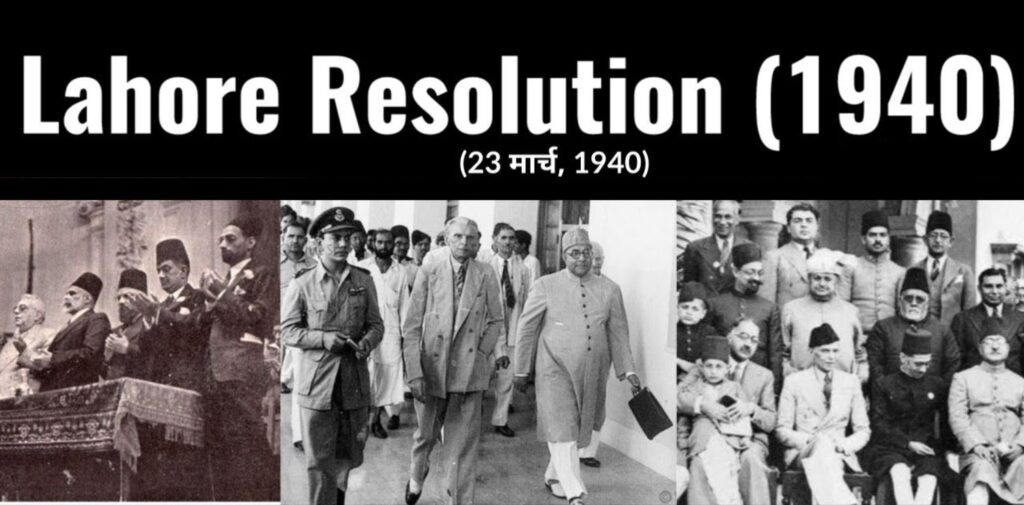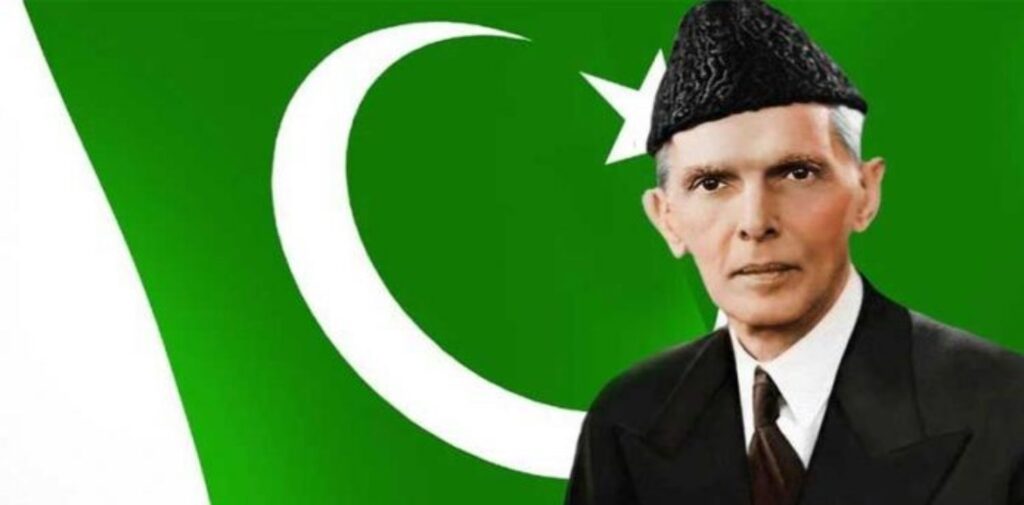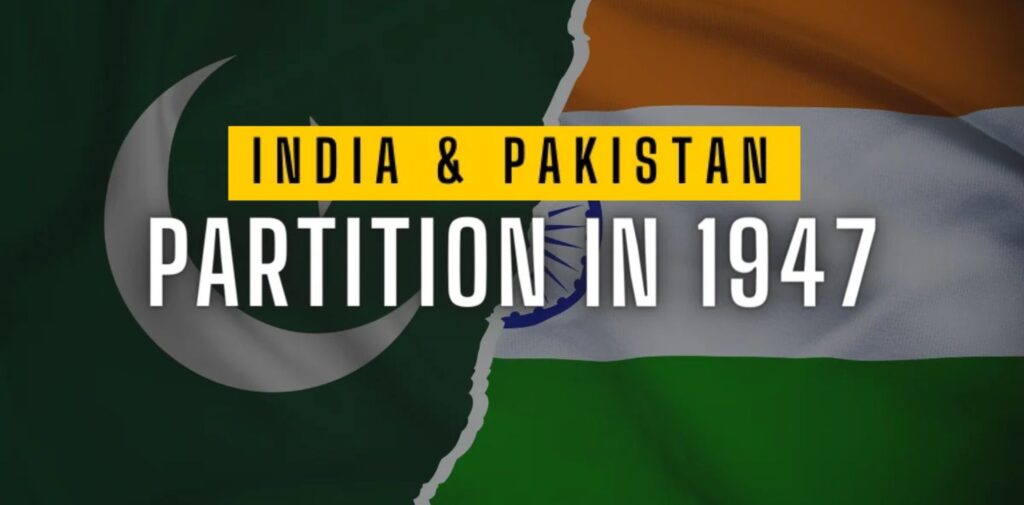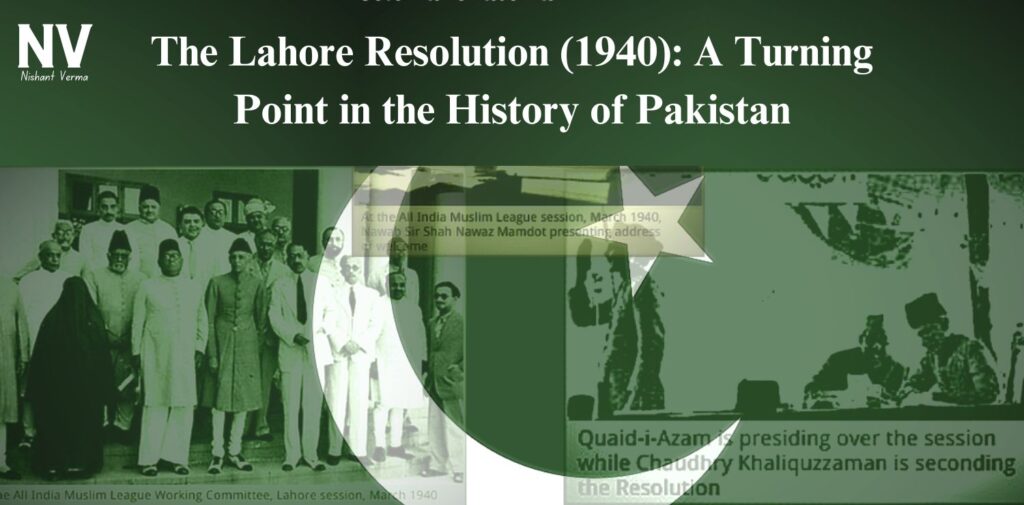The Lahore Resolution, also known as the Pakistan Resolution, was a crucial event in the history of the Indian subcontinent. Passed on March 23, 1940, by the All India Muslim League, this resolution laid the foundation for the creation of Pakistan. It marked the beginning of the movement for a separate Muslim state, distinct from India, and set the stage for the eventual partition of India in 1947. In this article, we will explore the significance of the The Lahore Resolution (1940), its historical context, the leaders involved, and its impact on the future of the subcontinent.
The Background: The Struggle for Independence
In the early 20th century, India was under British colonial rule. The Indian independence movement was gaining momentum, with various political groups and communities seeking freedom from British control. Among the most prominent of these groups were the Indian National Congress (INC) and the All India Muslim League.
- Indian National Congress (INC): The INC, founded in 1885, was primarily made up of Hindus and played a leading role in the fight for India’s independence. Leaders like Mahatma Gandhi and Jawaharlal Nehru pushed for a united, independent India.
- All India Muslim League: On the other hand, the Muslim League, founded in 1906, was concerned about the rights and interests of Muslims in a future independent India. Many Muslim leaders felt that in a unified India, Muslims would be politically and socially marginalized due to their smaller population compared to Hindus.
As the struggle for independence gained steam, a growing divide emerged between the Congress and the Muslim League. The INC’s push for a united India worried Muslim leaders, who feared that Hindu-majority rule would not protect Muslim interests. This concern led the Muslim League to advocate for a separate nation for Muslims.

Lahore Resolution (1940): The Birth of a Vision
In 1940, the All India Muslim League held its annual session in Lahore, a city that played a central role in the creation of Pakistan. During this session, the Muslim League, under the leadership of Muhammad Ali Jinnah, passed the Lahore Resolution on March 23, 1940. The resolution called for the creation of “independent states” for Muslims in the northwest and eastern zones of India. This was a bold statement that formally set the stage for the creation of Pakistan.
Key Points of the Lahore Resolution
The Lahore Resolution was a turning point for the Muslim League and its vision of a separate Muslim state. The main points of the resolution were as follows:
- Independent States for Muslims: The resolution demanded that Muslims in India should be allowed to have their own independent states. These states would be separate from the rest of India, where Hindus would continue to live.
- Autonomy for Muslims: It emphasized the need for full autonomy for Muslims in areas where they were in the majority. This meant that Muslims should be free to govern themselves without interference from the central government.
- Protection of Muslim Rights: The resolution also highlighted the protection of the religious, cultural, and political rights of Muslims. It was clear that the Muslim League wanted to safeguard the distinct identity and interests of Muslims in India.
- Opposition to Hindu Dominance: The resolution expressed concerns about the growing influence of the Hindu majority in the Indian National Congress and the impact it would have on Muslim political rights. The Muslim League wanted to ensure that Muslims would not be dominated by a Hindu-majority government in a united India.

The Role of Muhammad Ali Jinnah
At the heart of the Lahore Resolution was Muhammad Ali Jinnah, the leader of the All India Muslim League. Jinnah had been a prominent leader in the Indian National Congress early in his political career, but over time, he grew disillusioned with the Congress’s policies, particularly its perceived failure to protect Muslim interests. Jinnah believed that Muslims would never be able to secure their rights in a united India dominated by Hindus.
- The Vision of Pakistan: Jinnah’s vision for Pakistan was one where Muslims could live according to their own cultural and religious traditions. His idea was not just about political autonomy but also about creating a space where Muslims could freely practice their religion, language, and way of life.
- Jinnah’s Leadership: Jinnah’s leadership in the Muslim League was instrumental in convincing many Muslims that a separate state was necessary. His eloquent speeches and diplomatic skills won him the title of “Quaid-e-Azam” (Great Leader). After the Lahore Resolution, Jinnah became the driving force behind the movement for Pakistan.
The Reaction to the Lahore Resolution
The Lahore Resolution was a momentous occasion, and its impact was felt across India and beyond.
- Reaction in the Muslim Community: Among Muslims, the resolution was seen as a significant step toward securing their political rights. It gave them hope that they could build a state where they would not be a minority or dominated by the Hindu majority. The resolution also helped to unite various Muslim groups across India under the banner of the Muslim League.
- Reaction in the Congress and British Government: The Indian National Congress strongly opposed the Lahore Resolution. They viewed the demand for a separate Muslim state as a threat to the unity of India. Leaders like Jawaharlal Nehru and Mahatma Gandhi argued that a divided India would lead to unnecessary conflict and suffering for millions of people. The British government, which was still in control of India, was concerned about the implications of the Lahore Resolution. However, they were also aware that the demand for a separate Muslim state was gaining traction. The British government, already weakened by the demands of both the INC and the Muslim League, began to seriously consider the possibility of partition as a solution to the problem of India’s future.
The Significance of the Lahore Resolution
The Lahore Resolution was a turning point in the history of the subcontinent. It marked the official beginning of the movement for Pakistan and set the stage for the eventual partition of India in 1947. Here’s why the Lahore Resolution is so significant:
- Foundation of Pakistan: The Lahore Resolution is considered the foundation of Pakistan. It provided the ideological and political basis for the creation of a separate state for Muslims. The idea of Pakistan was officially articulated and became a reality just seven years later in 1947.
- End of a United India: The resolution made it clear that the Muslim League no longer wanted a united India. Instead, they wanted an independent Muslim-majority state. This vision of two separate nations—India for Hindus and Pakistan for Muslims—eventually led to the partition of India in 1947.
- Strengthening Muslim Identity: The resolution was a powerful statement of Muslim identity in India. It emphasized that Muslims were a distinct community with unique cultural, religious, and political needs. This helped strengthen the sense of unity among Muslims and gave them a sense of purpose in their struggle for a separate state.
- Jinnah’s Leadership: The Lahore Resolution solidified Jinnah’s role as the leader of the Muslim community. His leadership in advocating for Pakistan earned him the respect of millions of Muslims and established him as the key figure in the creation of the new nation.

The Aftermath: The Path to Partition
Following the Lahore Resolution, the Muslim League continued to push for the creation of Pakistan. Over the next few years, the political situation in India became increasingly tense. The British, who were exhausted by World War II and facing growing demands for independence, began to recognize that they could no longer hold onto India.
In 1947, the British decided to partition India into two separate nations—India and Pakistan. On August 14, 1947, Pakistan was created as a separate state for Muslims, while India remained a secular republic. This partition led to widespread violence, mass migration, and the loss of countless lives. The vision set out in the Lahore Resolution had become a reality, but it came with immense challenges and hardships.
Conclusion: A Legacy of the Lahore Resolution
The Lahore Resolution of 1940 was a pivotal moment in the history of the Indian subcontinent. It marked the beginning of the movement for Pakistan and laid the groundwork for the partition of India. The resolution, led by Muhammad Ali Jinnah, articulated the aspirations of millions of Muslims who sought a separate state where they could freely practice their religion and protect their cultural identity.
Today, March 23 is celebrated as Pakistan Day, commemorating the day when the Lahore Resolution was passed and the dream of Pakistan began to take shape. The resolution remains a symbol of the struggle for Muslim rights in India and the birth of a new nation. While the creation of Pakistan came with its own set of challenges, the Lahore Resolution remains a defining moment in the history of the subcontinent.




